Six-hour clock may refer to:
| This disambiguation page lists articles associated with the title Six-hour clock. If an internal link led you here, you may wish to change the link to point directly to the intended article. |
Six-hour clock may refer to:
| This disambiguation page lists articles associated with the title Six-hour clock. If an internal link led you here, you may wish to change the link to point directly to the intended article. |
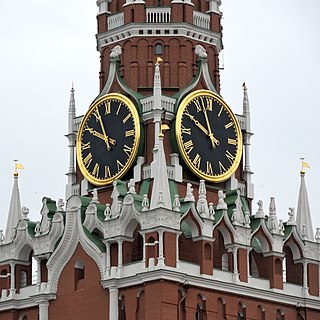
A clock is an instrument used to measure, keep, and indicate time. The clock is one of the oldest human inventions, meeting the need to measure intervals of time shorter than the natural units: the day, the lunar month, and the year. Devices operating on several physical processes have been used over the millennia.

An hour is a unit of time conventionally reckoned as 1⁄24 of a day and scientifically reckoned as 3,599–3,601 seconds, depending on conditions.
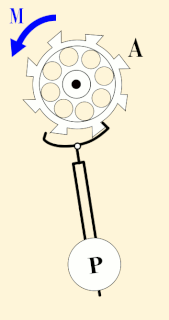
The second is the base unit of time in the International System of Units (SI), commonly understood and historically defined as 1⁄86400 of a day – this factor derived from the division of the day first into 24 hours, then to 60 minutes and finally to 60 seconds each. Analog clocks and watches often have sixty tick marks on their faces, representing seconds, and a "second hand" to mark the passage of time in seconds. Digital clocks and watches often have a two-digit seconds counter. The second is also part of several other units of measurement like meters per second for velocity, meters per second per second for acceleration, and per second for frequency.
A time zone is a region of the globe that observes a uniform standard time for legal, commercial, and social purposes. Time zones tend to follow the boundaries of countries and their subdivisions because it is convenient for areas in close commercial or other communication to keep the same time.
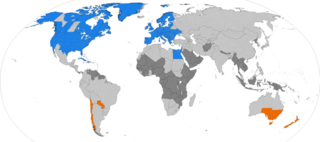
Daylight saving time (DST), also daylight savings time or daylight time and summer time, is the practice of advancing clocks during summer months so that evening daylight lasts longer, while sacrificing normal sunrise times. Typically, regions that use daylight saving time adjust clocks forward one hour close to the start of spring and adjust them backward in the autumn. In effect, DST causes a lost hour of sleep in the spring and an extra hour of sleep in the fall.
The 12-hour clock is a time convention in which the 24 hours of the day are divided into two periods: a.m. and p.m.. Each period consists of 12 hours numbered: 12, 1, 2, 3, 4, 5, 6, 7, 8, 9, 10, and 11. The 24 hour/day cycle starts at 12 midnight, runs through 12 noon, and continues to the midnight at the end of the day. The 12-hour clock has been developed from the middle of the second millennium BC to the 16th century AD.
The 24-hour clock is the convention of time keeping in which the day runs from midnight to midnight and is divided into 24 hours, indicated by the hours passed since midnight, from 0 to 23. This system is the most commonly used time notation in the world today, and is used by international standard ISO 8601.
The six-hour clock is a traditional timekeeping system used in the Thai and formerly the Lao language and the Khmer language, alongside the official 24-hour clock. Like other common systems, it counts twenty-four hours in a day, but divides the day into four quarters, counting six hours in each. The hours in each quarter are told with period-designating words or phrases, which are:
A grandfather clock is a tall, freestanding, weight-driven pendulum clock with the pendulum held inside the tower or waist of the case. Clocks of this style are commonly 1.8–2.4 metres (6–8 feet) tall. The case often features elaborately carved ornamentation on the hood, which surrounds and frames the dial, or clock face. The English clockmaker William Clement is credited with the development of this form in 1670. Until the early 20th century, pendulum clocks were the world's most accurate timekeeping technology, and longcase clocks, due to their superior accuracy, served as time standards for households and businesses. Today they are kept mainly for their decorative and antique value, being widely replaced by both analog and digital timekeeping.
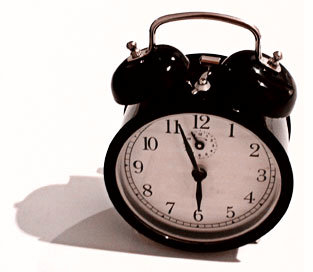
In sociology and anthropology, time discipline is the general name given to social and economic rules, conventions, customs, and expectations governing the measurement of time, the social currency and awareness of time measurements, and people's expectations concerning the observance of these customs by others.

During British Summer Time (BST), civil time in the United Kingdom is advanced one hour forward of Greenwich Mean Time (GMT), so that evenings have more daylight and mornings have less.

The six o'clock swill was an Australian and New Zealand slang term for the last-minute rush to buy drinks at a hotel bar before it closed. During a significant part of the 20th century, most Australian and New Zealand hotels shut their public bars at 6 pm. A culture of heavy drinking developed during the time between finishing work at 5 pm and the mandatory closing time only an hour later.
Thailand follows UTC+07:00, which is 7 hours ahead of UTC. The local mean time in Bangkok was originally UTC+06:42:04. Thailand used this local mean time until 1920, when it changed to Indochina Time, UTC+07:00; ICT is used all year round as Thailand does not observe daylight saving time.

A Japanese clock is a mechanical clock that has been made to tell traditional Japanese time, a system in which daytime and nighttime are always divided into six periods whose lengths consequently change with the season. Mechanical clocks were introduced into Japan by Jesuit missionaries or Dutch merchants in the 16th century. These clocks were of the lantern clock design, typically made of brass or iron, and used the relatively primitive verge and foliot escapement. Tokugawa Ieyasu owned a lantern clock of European manufacture.
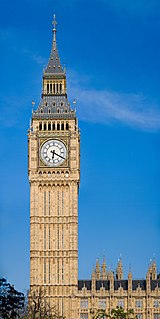
Big Ben is the nickname for the Great Bell of the clock at the north end of the Palace of Westminster in London and is usually extended to refer to both the clock and the clock tower. The official name of the tower in which Big Ben is located was originally the Clock Tower, but it was renamed Elizabeth Tower in 2012 to mark the Diamond Jubilee of Elizabeth II.

The Ancient Egyptians were one of the first cultures to widely divide days into generally agreed-upon equal parts, using early timekeeping devices such as sundials, shadow clocks, and merkhets . Obelisks are used by reading the shadow that it makes. The citizens could divide the day into two parts, and then into smaller hours.

A clock position is the relative direction of an object described using the analogy of a 12-hour clock to describe angles and directions. One imagines a clock face lying either upright or flat in front of oneself, and identifies the twelve hour markings with the directions in which they point.

A referendum on the hours for the sale of liquor in hotel bars was held in New Zealand on 9 March 1949. Voters were asked whether they favoured continuing the closing of hotel bars at 6 pm or extending the closing time to 10 pm. The change was rejected by 75.5% of voters.

A referendum on the hours for the sale of liquor in hotel bars was held in New Zealand on 23 September 1967. Voters were asked whether they favoured continuing the closing of hotel bars at 6 pm or later closing, the actual hours of sale to be decided according to local conditions. The change was favoured by 64.5% of voters.

The six-hour clock, also called the Roman or the Italian system, is a timekeeping system used in Italy. In this system, the day starts at the evening Ave Maria at the end of twilight, approximately half an hour after sunset, and the following 24 hours are divided into four cycles of six hours each.